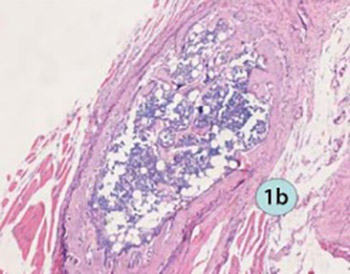Injectable calcium phosphate cement and fibrin sealant recombined human bone morphogenetic protein-2 composite in vertebroplasty: an animal study
DOI:
https://doi.org/10.17305/bjbms.2012.2443Keywords:
polymethylmethacrylate, calcium phosphates, bone morphogenetic proteins, histology, vertebroplastyAbstract
Polymethylmethacrylate (PMMA) is currently the most commonly-used material, but it may induce adjacent vertebral fracture due to low degradation and high strength. Our study evaluated the feasibility of injectable calcium phosphate cement (ICPC) and fibrin sealant (FS) as an injectable compound carrier of human bone morphogenetic protein-2 (rhBMP-2) in New Zealand rabbits for vertebroplasty. Results showed ICPC/FS/rhBMP-2 composites induced alkaline phosphatase most effectively at 2 and 4 weeks after implantation. Histological examination confirmed that new bone and vessels developed at 4 weeks in the ICPC/FS/rhBMP-2 group. At 8 weeks, parts of the ICPC/FS/rhBMP-2 cement degraded with mature bone tissues and neovascularization. New bone was observed by MicroCT to form early and massively, and the ossification was almost synchronous with the material degradation. In the PMMA Group, however, no new bone formation or material degradation was found. The stiffness and tension of vertebral bodies implanted with ICPC/FS/rhBMP-2 were weaker than those of normal vertebral bodies as well as vertebral bodies implanted with PMMA at 4 weeks (p<0.05). At 8 weeks, the stiffness and tension of vertebral bodies implanted with ICPC/FS/rhBMP-2 became strong; no significant difference was noted in the stiffness and tension, compared with normal vertebral bodies (p>0.05), while they were significantly lower, compared with vertebral bodies implanted with PMMA (p<0.05). It is concluded that, with good characteristics of osteoinductivity, the bone substitution is synchronous with material degradation.
Citations
Downloads

Downloads
Additional Files
Published
How to Cite
Accepted 2017-09-13
Published 2012-11-20









